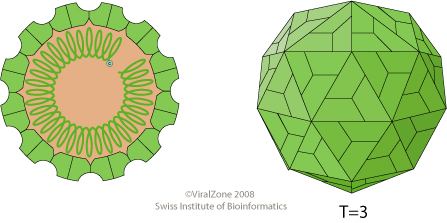Group Group IV ((+)ssRNA) Rank Species | ||
 | ||
Similar Cowpea chlorotic mottle virus, Alfalfa mosaic virus, Bromoviridae, Turnip yellow mosaic vi, Tomato bushy stunt virus | ||
Brome mosaic virus icosahedral 2 fold 3 fold and 5 fold views
Brome mosaic virus (BMV) is a small (28 nm, 86S), positive-stranded, icosahedral RNA plant virus belonging to the genus Bromovirus, family Bromoviridae, in the alphavirus-like superfamily.
Contents
- Brome mosaic virus icosahedral 2 fold 3 fold and 5 fold views
- Brome mosaic virus pdb 1js9 rendered with qutemol
- References
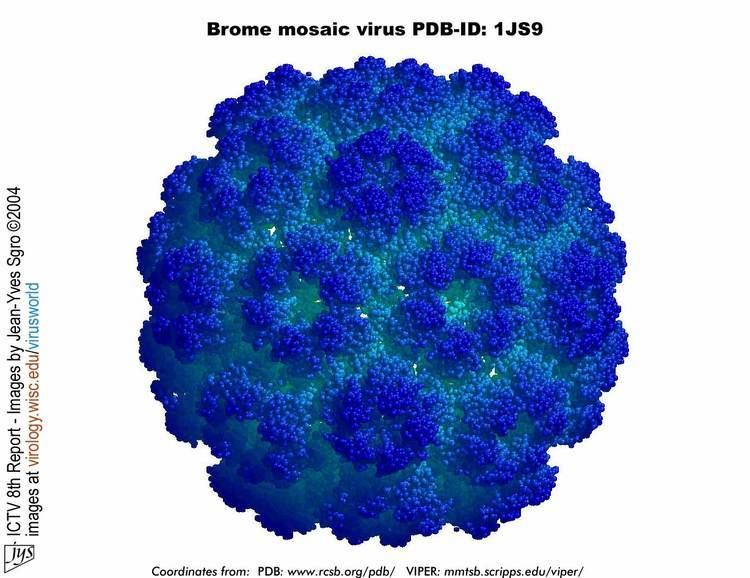
BMV commonly infects Bromus inermis (see Bromus) and other grasses, can be found almost anywhere wheat is grown, and thrives in areas with heavy foot or machinery traffic. It is also one of the few grass viruses that infects dicotyledonous plants; however, it primarily infects monocotyledonous plants, such as barley and others in the family Gramineae.

BMV was first isolated in 1942 from bromegrass (Bromus inermis), had its genomic organization determined by the 1970s, and was completely sequenced with commercially available clones by the 1980s.
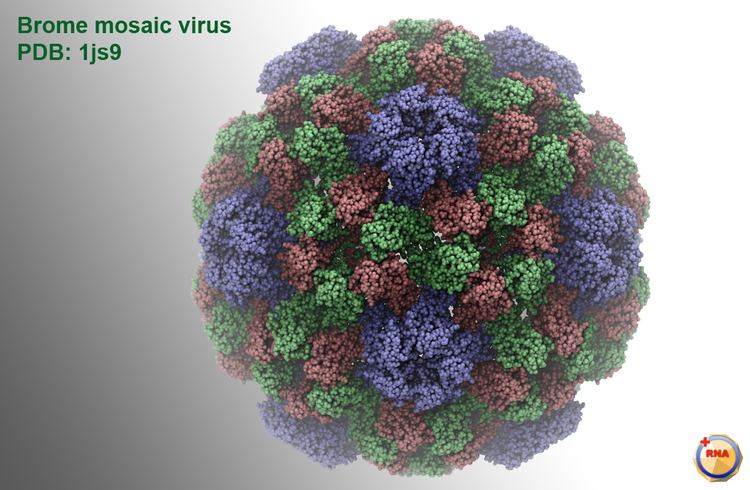
The alphavirus-like superfamily includes more than 250 plant and animal viruses including Tobacco mosaic virus, Semliki forest virus, Hepatitis E virus, Sindbis virus, and arboviruses (which cause certain types of encephalitis). Many of the positive-strand RNA viruses that belong to the alphavirus family share a high degree of similarity in proteins involved in genomic replication and synthesis. The sequence similarities of RNA replication genes and strategies for BMV have been shown to extend to a wide range of plant and animal viruses beyond the alphaviruses, including many other positive-strand RNA viruses from other families. Understanding how these viruses replicate and targeting key points in their life cycle can help advance antiviral treatments worldwide.
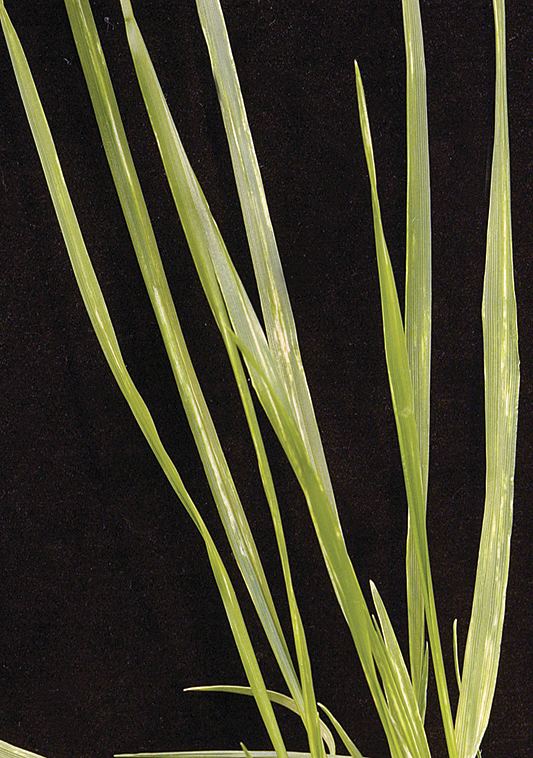
BMV has a genome that is divided into three 5' capped RNAs. RNA1 (3.2 kb) encodes a protein called 1a (109 kDa), which contains both an N-proximal methyltransferase domain and a C-proximal helicase-like domain. The methyltransferase domain shows sequence similarity to other alphavirus m7G methyltransferases and guanyltransferases, called nsP1 proteins, involved in RNA capping. RNA2 (2.9 kb) encodes the 2a protein (94 kDa), the RNA-dependent RNA polymerase, responsible for replication of the viral genome. The dicistronic RNA3 (2.1 kb) encodes for two proteins, the 3a protein (involved in cell-to-cell migration during infection) and the coat protein (for RNA encapsidation and vascular spread), which is expressed from a subgenomic replication intermediate mRNA, called RNA4 (0.9 kb). 3a and coat protein are essential for systemic infection in plants but not RNA replication.
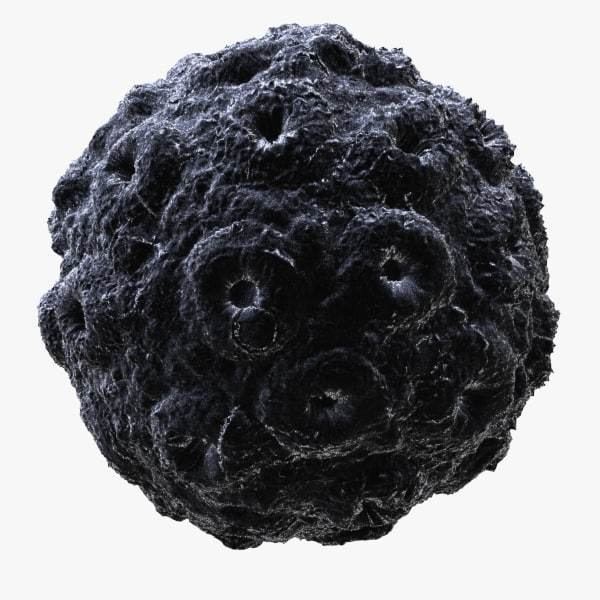
Brome mosaic virus pdb 1js9 rendered with qutemol

